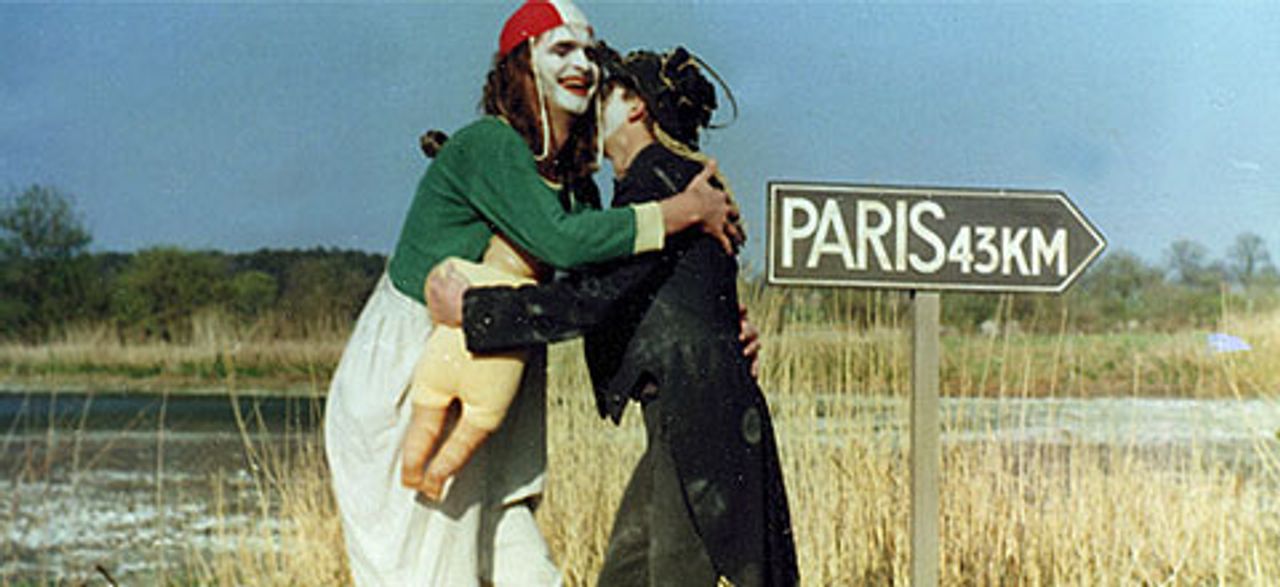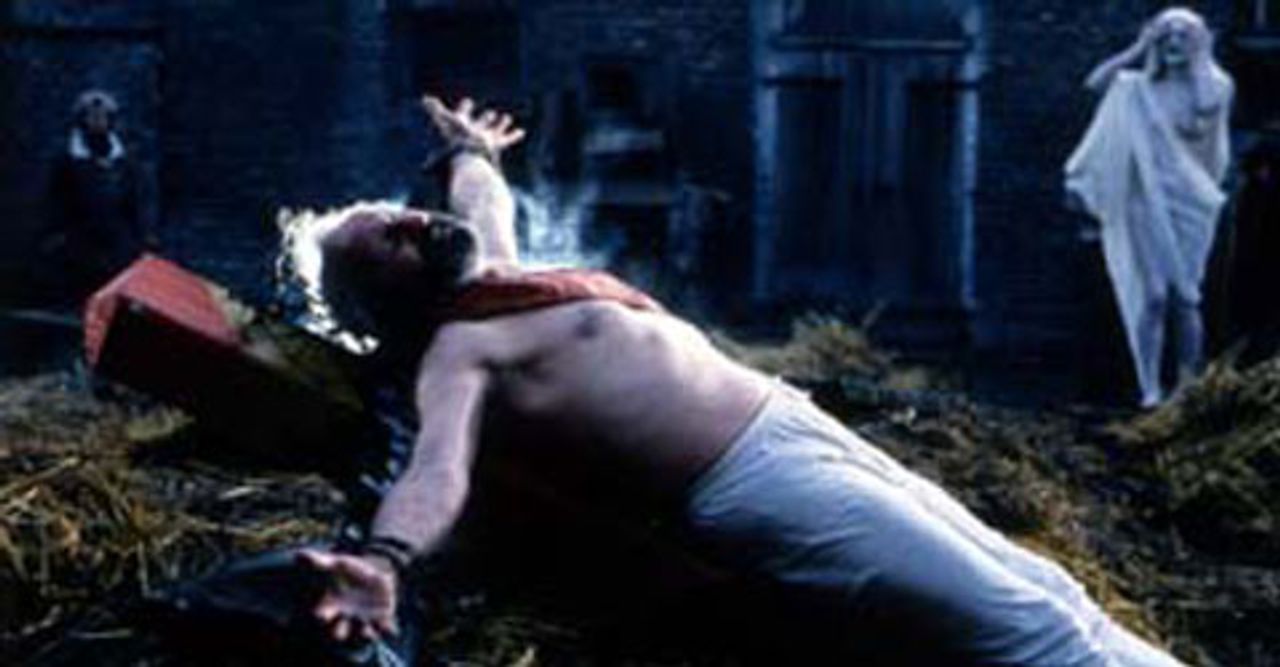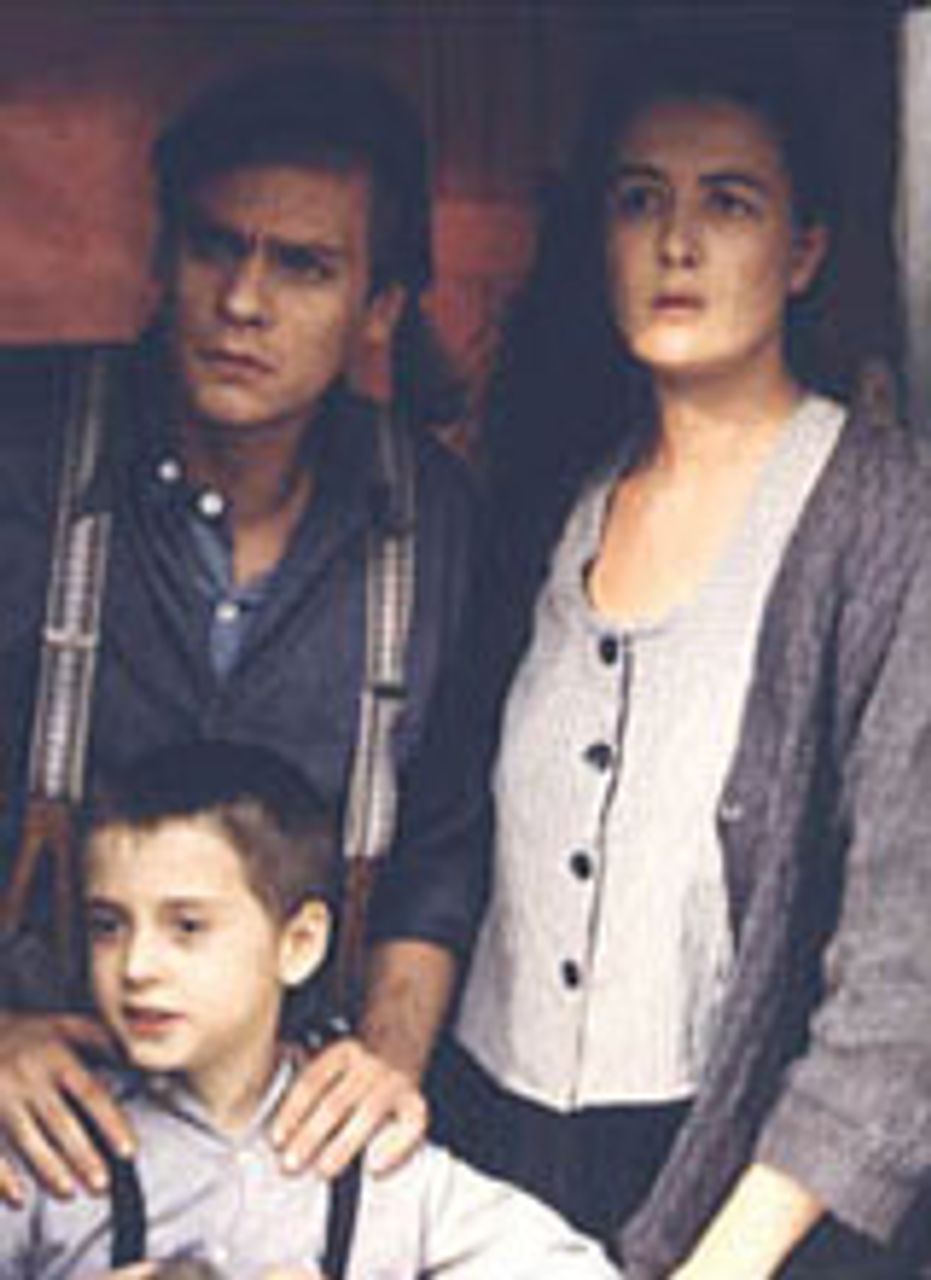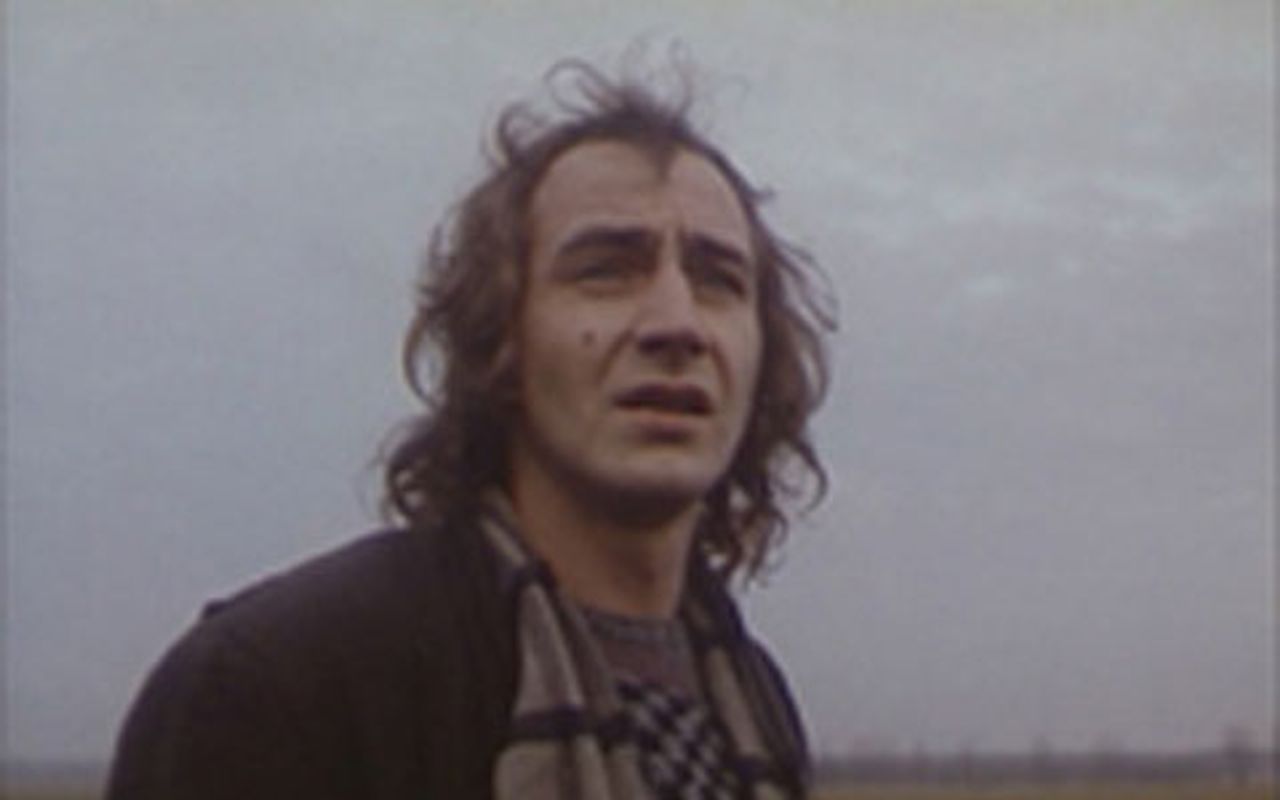Last February, the Berlin film festival presented a series of films under the title “Goodbye to Winter”, covering the period prior to the fall of the Berlin Wall. Then, at the end of May, the Zeughauskino in Berlin cinema screened a follow-up series, “It Hurts to Say Goodbye”.
While the East German films of the 1980s focused on a range of themes, from hopes for reform to possibilities of a “socialism” worth living in the GDR (former Stalinist German Democratic Republic), the second set of feature films, set between 1990 and 1992, reflected the shattering of these hopes and the sprouting of new illusions—this time illusions in a ‘capitalism worth living.’
The Latest from the Da-Da-R (1990), directed by Jörg Foth, is a film adaptation of two stage works of the GDR revue performers and song-writers, Steffen Mensching and Hans-Eckardt Wenzel. Their cabaret act, which was deliberately aimed to differ from the kind of cabaret acceptable to the state, took off like a bomb in the 1980s. They saw themselves as clowns who only appeared to accommodate themselves to the Stalinist authorities, while they were carrying out a sort of counter culture based on favouring anarchy, fairground performances and street theatre—all made possible with official approval, of course.
Having broken out of prison, the two clowns Meh and Weh wander around the miserable countryside of the crumbling GDR, carrying with them a red lifebelt and a doll—symbols of longing. They make fun of the absurdly ritualistic awarding of medals by state culture officials and the passion for hunting on the part of Politburo members, highlighting their illusory world by shooting blank cartridges at people dressed in bizarre animal costumes.
 The Latest from the Da-Da-R
The Latest from the Da-Da-RThe clowns mix with ordinary folk. In one scene, people gathered at the legendary witch burning grounds at Brocken ignite a bonfire, giving the clowns a fright. To the approving howls of on-lookers, a red flag goes up in flames. “A momentary lapse”? Or is it a display of anti-communism, arising from the ever prevailing mood of mistrust in the GDR?
“Everything here is sh...” is written on a toilet lid opened up like a book. Goethe’s text from “Faust” is read: “Beware, Mankind! I’ve studied philosophies and sciences all my life ... And I’m no wiser than before.” Then Karl Marx is quoted in a slaughterhouse: “People make their own history—but they do not make it just as they please,” Documentary film is used to show workers performing mortifying, mechanically routine labour. A cow dies slowly, twitching before the camera—a repulsive scene.
In their new world, the clowns are hunted by a crowd, crying out for money and led by ghostly forms suddenly set free after the collapse of the GDR, like an evil genie out of a bottle. Among the crowd are dubious judges, churchmen and an SA (Hitler’s paramilitary army) man. The clowns finally arrive at the old Prussian military cemetery in Berlin and, like dogs yap and yelp in response to the sound of barking coming from the direction of a concrete slab construction, decorated with German flags. On a balcony stand two Alsatian dogs.
Summing up, it is difficult say which is more striking: the scenes of overflowing self-pity on the part of Wenzel and Menschling or their political vacuity. These two court jesters of the SED (former Stalinist Socialist Unity Party) are seeking to present themselves as tragic “left-wing” victims of German history.
The Country Beyond the Rainbow (1992), Herwig Kipping’s debut film, is similar in sentiment, although Kipping as an artist was at loggerheads with SED functionaries from his days as a student. In the middle of a desert is a green oasis, the village of “Stalina”. Here viewers see the GDR’s 1950s drift by—from the end of the war to Stalin’s death and the uprising of June 17, 1953—in a manner paralleling incidents from the Bible. The mayor dies on a cross, praying to Stalin—not for the sins of the Party, but as the victim of a raging mob driven essentially by the same egoism, sadism and malicious violence which, the film purports, characterises society as a whole.
 The Country Beyond the Rainbow
The Country Beyond the RainbowThe film evokes the Stalin cult of the 1950s and the war on saboteurs, hysterically pursued by the SED. It deals with themes of political denunciation, devious personal relations and rigorous work schedules. But at no time does it try to offer a rational explanation of such phenomena. Scenes, depicting the grotesque, intensify the general impression of absurdity. At the end, the question is posed as to whether this absurd state of things is not in some way preferable to the loss of socialist ideals, which are given an air of fairy-tale religiosity from the mouth of the young girl, Maria—the film’s bearer of hope. Beyond the oasis is only a sterile, meaningless and hostile nothingness.
In Lost Landscape (1991), Andreas Kleinert (Paths in the Night) calls into question the rigid contrast between the two social systems of the Cold War era. The film portrays the return of a West German politician to the place of his childhood in the GDR, where he becomes swamped in memories.
 Lost Landscape
Lost LandscapeThe young boy grows up in complete isolation on a farmstead, surrounded by a high wooden fence. His parents hide him from the outside world. Responsible for the situation are the trauma of fascism and the wartime bombing of the allies. The parents forbid their son to go to school, read newspapers and, in short, ban everything coming from the outside world, where—as they imagine—people again want to make soldiers out of children. Having grown older, the boy yields to his curiosity, overcomes the obstacle of the fence and sees in the forest mysterious refugees, who are eager to get to the other side of the river, where—according to the parents—there is nothing, i.e. the West. Later he escapes and swims across the river, only to meet another barrier on the further bank: the conservative, stale air of the Federal Republic of Germany in the 1950s.
A marked feature of this film, indicating the influence of the pioneer Russian director Andrei Tarkovsky, is its ambivalence. The boy’s isolation from society serves to reinforce his parents’ neurosis. On the other hand, his confinement to the farmyard does protect him—as the parents intended—from the brutality of the outside world. Moreover, the so-called freedom to be found in West Germany, the goal of people fleeing the GDR, is certainly relative and has its limits. The director, an advocate of pragmatic political policy, knows this very well.
Kleinert searches for links, but in the final analysis his ahistorical approach, which elevates the psychological nature of the problems he investigates, ends up relativising issues, including that of the Stalinist dictatorship. The viewer is made to see the world from the subjective outlook of narrow-minded parents and from a child’s point of view. There are no indications of an objective approach to the subject. The superficiality of the film’s references to Stalinist and fascist violence serve to promote the old cliché that communism is the same as fascism, and the lie that Stalinism was the heritage of the October Revolution is tacitly accepted.
Sinister, leather-coated men in pursuit of refugees rouse associations with the SS or the Gestapo. In a film shot predominantly in black and white, scenes showing numerous torches in a forest bring to mind documentary footage of Nazi torchlight processions. The film’s appeal for the overcoming of barriers between people is far too general.
Silent Country (1992), one of Andreas Dresen’s finest films, shows how a GDR provincial theatre group, while rehearsing Samuel Beckett’s Waiting for Godot, is taken by surprise when it learns of the fall of the Berlin Wall.
After the theatre’s summer break, the number of refugees increases dramatically in the GDR. The arrogant reaction of Erich Honecker (Stalinist President of the GDR) arouses indignation among the people. Suddenly, the Godot production—which, in the hands of the young director Kai, is intended to express despondency and hopelessness—becomes more and more questionable to everyone concerned. It turns out to be short leap from an attitude of dogged despair to a recognition that it is no use waiting for something to happen and better to seize the initiative: simply get up and go.
 Silent Country
Silent CountryThe ensemble passes a resolution, demanding public discussion of the situation confronting the country. People are no longer to hang around in a state of frustration, but to come together in picket lines and in the church under the guidance of the citizen initiative, New Forum.
Confronted with the group’s resolve, the theatre’s manager and an SED party functionary go along with the plan just to be on the safe side. They fawn over the people who solemnly and devoutly light their candles and march in small processions with placards declaring: “We are the people”, “Thought is free” and “Democracy”.
The letter to Honecker is not sent, however, until after an inaugural speech by Egon Krenz, which is to be a signal that the Party once more has everything under control. One of the young actors gets caught up in a police operation in Berlin: “A different performance will be presented here today and we are the ones to say what will be staged.” Shortly after this, the SED opens the Wall. The reaction is joy and grief. “This is the end” combined with “Now we can go anywhere we like”.
Somehow the protesters run out of steam and a sense of uncertainty begins to spread among them. The premiere of the group’s play is poorly attended and future performances are cancelled by the manager, who senses a return to political normalcy. The church, the platform for New Forum, is as empty as ever and Horst, the old actor who was first to speak out, once again falls into embittered silence.
Whatever the future brings requires dedicated and active people. Unlike his assistant, Claudia, Kai decides not to uproot and settle in West Germany. Thirsting for action, he is determined to confront the new artistic challenges here at home. And he has learned in the meantime that actors on the other side of Germany are not only interested in Mickey Mouse comics and expensive cars.
Dresen sensitively captures the initial mood of hope for many at the time of reunification, which capsized into disappointment for many artists after the fall of the Wall and the election victory of the CDU (Christian Democratic Union). He created an authentic figure in the character of the opportunistic theatre manager, convincingly portrayed by Kurt Böwe. And Thomas, the young actor from Hamburg who for a short time manages to enthuse the ensemble about theatre and the power of art, is a sympathetic character who has one thing in common with the rest of them: he knows as little as they do where the journey is taking them, and has just as little influence on its course.
Which direction?
Dresen’s film is the antithesis of the depressive mood so strongly expressed in The Latest from the Da-Da-R which, in its own way, announced “the end of history” after the collapse of Stalinism. The clowns are ultimately despondent defenders of the Stalinist system that for them, in spite of all its absurdity, represented a bulwark against the capitalist and Nazi tidal wave they now see racing towards them. Finding themselves “surrounded by bosses and big shots”, they become panic-stricken because the population seems to be welcoming the imminent catastrophe with enthusiasm.
Dresen’s film does not present an hysterical defence of the GDR state. Nor does it fall for West German Chancellor Helmut Kohl’s right-wing slogan: “Either freedom or socialism”. Dresen sees one simple, positive aspect to the social and political upheaval. The fall of the Wall leads to the coming together of the ordinary people of East and West Germany. His somewhat threadbare answer to the hysterical “leftist” end-of-the-world mood is that under their skin people are the same everywhere—and that also applies to those living under capitalism.
That the hopes of many artists for a better “GDR socialism” after the fall of the Wall faded into hopes for a “humanised” capitalism is primarily a consequence of the policies pursued in the GDR, whose origins were rooted, not in the socialist movement, but in its suppression under Stalinism. A genuine socialist perspective would have required workers to carry out a political revolution, to overthrow the ruling bureaucracy, and expose the crimes of Stalinism. Instead, the oppositional groups and parties of 1989-90—such as New Forum, Democratic Awakening, Alliance 90, Democracy Now etc.—adopted the perspective of Soviet President Mikhail Gorbachev, who called for a return to the market economy in the name of Perestroika (reconstruction) and Glasnost (openness). Not only the “reformers” of the SED like Hans Modrow and Gregor Gysi, but also many artists welcomed these developments enthusiastically, thereby contributing to the confusion of the general population.
The films in this series reveal the disorientation of most film directors during die Wende (capitalist reunification) in Germany. No writer-director at the time anticipated the extent of the drastic destruction of industry and jobs that began after reunification, or raised a voice against it. Even Dresen’s film fails to give any premonition of what is to come. Nevertheless what is characteristic of his film-making is an unwavering concern and interest in the plight of ordinary people.
The author also recommends:
Jadup and Boel: The last banned film from the former East Germany
[April 29, 2009]
